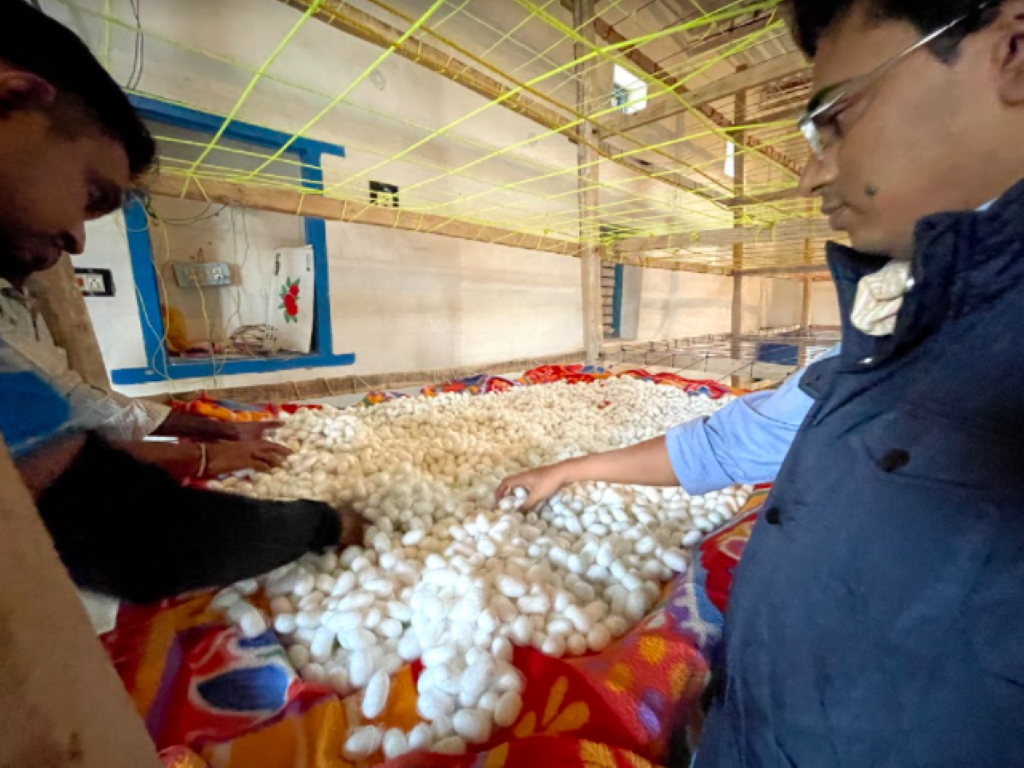
India is the second largest producer of silk in the world. The first is China. The silk industry generates employment to approximately 8.25 million people in rural and semi urban areas. The Coronavirus pandemic has disrupted the supply-chain of sericulture. This has thrown in a lot of serious challenges to silk farmers. Demand for silk has gone to almost zero and silk farmers are struggling to make their ends meet.
Amidst this grim scenario, ReshaMandi, India’s first silk agri-tech start-up, has arrived with the vision of bringing in standardization in a highly unregulated market.
ReshaMandi's proprietary AI and IoT technology is bringing in transparent and inexpensive solutions to the finer fabrics issues in India while closely working with farmers to streamline the silk industry and utilizing Reshamandi app especially curated for farmer’s productivity. Their platform has helped farmers sell over INR 15 crore worth of cocoons (3 lakh Kgs), practically from their farms itself without the hassle of travelling to Mandis. The start-up recently raised $1.7M as a part of its seed round funding led by Omnivore and Strive Ventures.
In a candid conversation with Krishi Jagran’s Shipra Singh (SS), Co-founder and CEO of ReshaMandi, Mayank Tiwari (MT), talks of digitizing the nation's untouched silk supply chain, endeavoring towards replacing the current use of Chinese silk with the use of Indian silk, and more.
SS. What propelled you to start a venture to aid silk farmers?
MT: My education and experience in working closely with artisans in the handlooms and handicrafts sector in NIFT (National Institute of Fashion Technology) set me up to pursue a venture in the silk industry. With deep interests in finer fabrics, I discerned massive problems in the supply chain, which caused all the stakeholders to lose out and the end consumers having to shell out more money.
India’s silk industry is one of the largest generators of employment and is seeing an impressive growth of 10% per year but at the same time is riddled with problems. Issues like lack of standardization in the industry, poor database management, a diverse range of practices leading to fluctuations in production and quality are still plaguing the sector. This led to the initial conception of the idea of ReshaMandi.
ReshaMandi’s beginnings are no less a feat of power of fate, luck, and sheer determination at play. It brought three friends together in the midst of the worst pandemic to bring this unique concept to life.
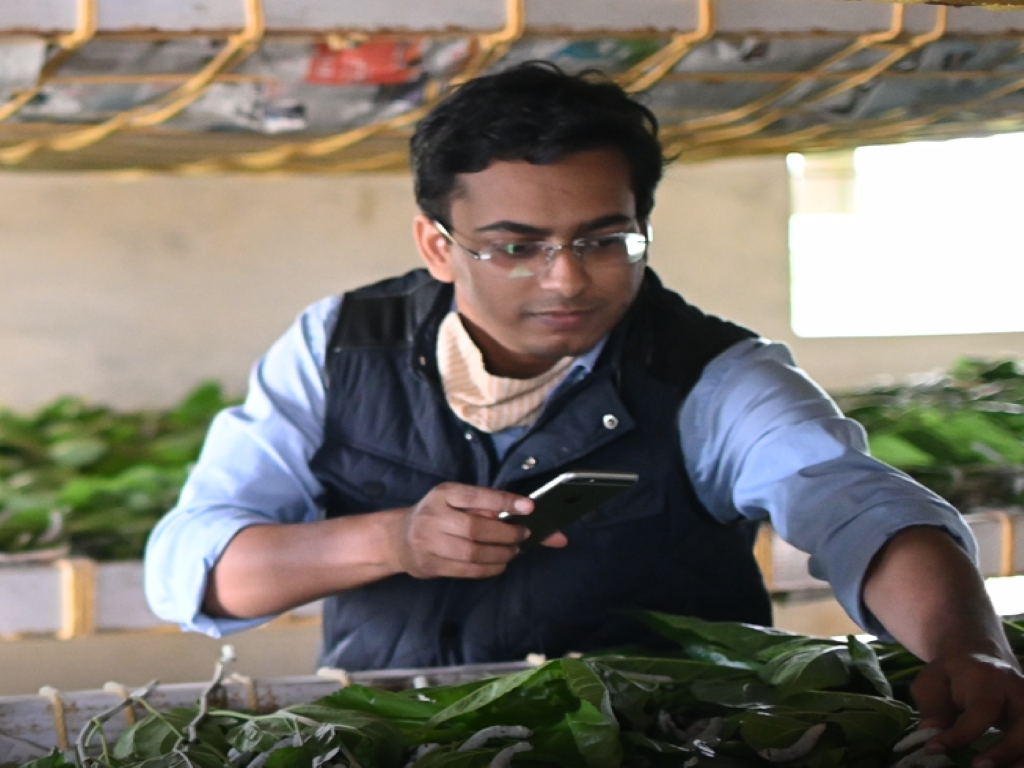
We were determined to identify the root problem and work our way up through every level of the supply chain. The very next day the lockdown in India was lifted partially. I started out by personally reaching out to farmers in and around Bangalore. Being based out of Bangalore presented a great opportunity to connect with our target audience with Karnataka being the hub of sericulture. We helped them achieve market linkages and took upon the logistics aspect of their operations and ensured they get the best rates for their produce.
When Co-founder & CTO Saurabh Agarwal came on board we were able to introduce the much-needed technological intervention to the operations. The farmers were particularly thrilled to see a new entrant breathe fresh life into the sector. Utkarsh Apoorva, our co-founder, and CBO was instrumental in conducting decisive on-ground research, over months, which helped us identify key issues. Furthermore, we raised $1.7M in a seed round led by Omnivore and Strive Ventures in March 2021.
Currently, we are working closely with 7500 farmers, 560 reeling plants, and 3840 weaving units, and this number keeps growing every day.
SS: Silk industry being a highly unregulated industry, what challenges did you face in your endeavors?
MT: The silk industry is highly unorganized with problems like price fluctuations, absence of proper markets, lack of proper logistics, no definitive advisory, minimal quality testing, and no transparency in the processes. ReshaMandi works as a grassroots-level technology enabler, digitizing the silk supply chain, working directly with sericulture farmers, fabric weavers, silk reelers, and retailers, enabling them to get the best price for their produce, reducing the time to market, and making sure that they are supplied with the best raw materials and testing kits.
Initially when we started, language barrier was the main issue in communicating ReshaMandi’s offerings. But when farmers started seeing results by implementing our suggestions, tools, and using the app, they became our biggest advocates and helped us in spreading the word.
Farmers also have a hard time traveling long distances to sell their produce in Mandis where they are not guaranteed the right price for their cocoons. The silk industry being a buyers’ market, farmers are also often subjected to cartel practices to drive down the prices. We aimed to completely eliminate the uncertainties of the process presenting a transparent process to the farmers. Due to various practices followed in rearing the silkworms, there is divergence in productivity and quality.
Our team, therefore, provides the farmers with IoT devices that provide them with personalized advisories in order to achieve uniformity in productivity and quality. We also provide them with instant quality tests to check the grading of the yarn which helps them earn better returns for their produce.
Silk weavers also suffer through a similar conundrum, being subject to various problems like lack of transparent pricing, unpredictable yarn quality, and overpricing by middlemen which have led them to choose imported silk over indigenously produced yarns. We tackle the problem by providing superior quality yarns at lower rates than the imported variety and a digital platform to showcase their final product through our platform, Amraii.
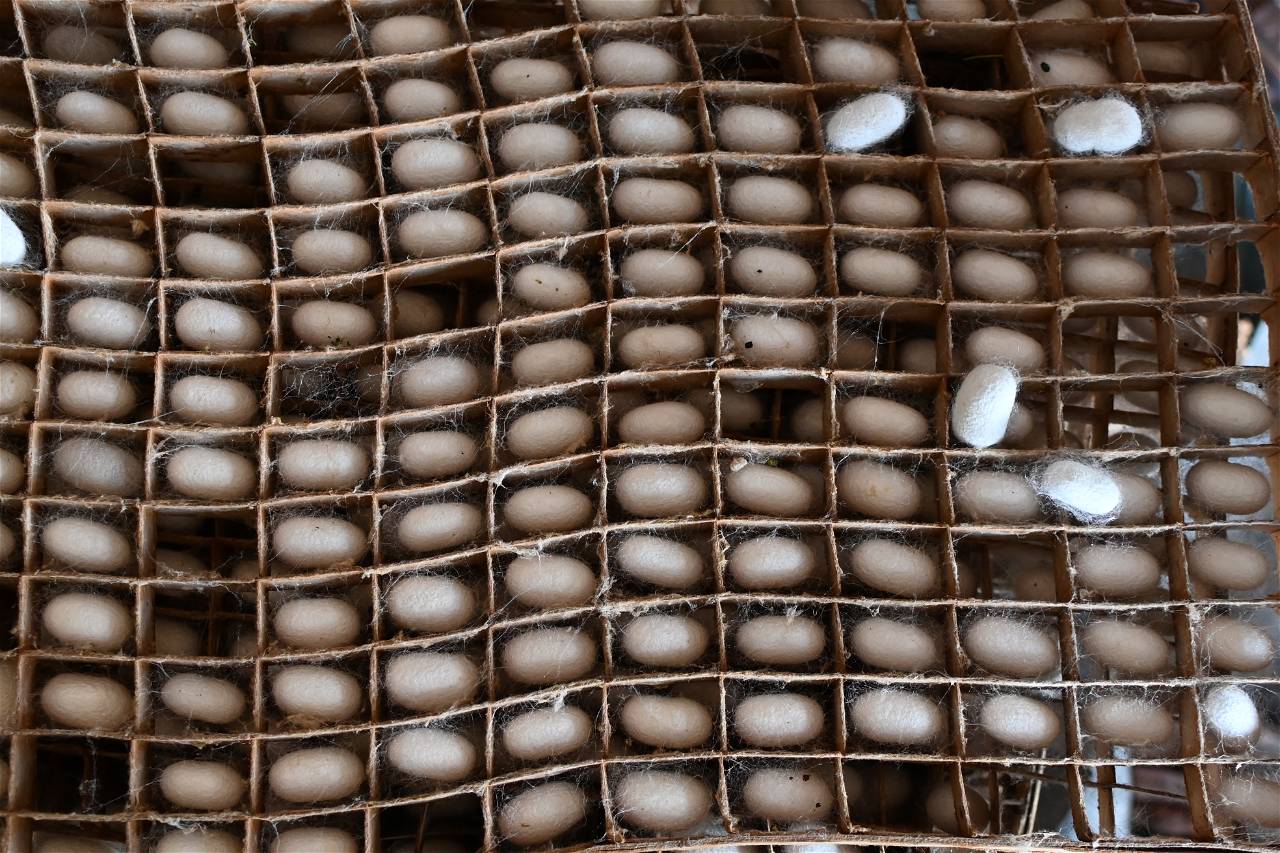
SS: What is the difference between imported silk and Indian silk? Why is imported silk popular here? How can we make our own silk shine in the market?
MT: China and India put together account for about 90% of total silk production. The Chinese silkworms are considered to be much more yielding as they have high productivity of cocoon per acre. The case is because Chinese silkworms are of bivoltine variety whereas Indian silkworms are multivoltine. This also goes on to the advantages like higher tensile strength on the loom and high silk output per kilogram.
The popularity factor of Chinese silk comes from the import prices, which are tough to compete with. Most of the traders would look for price over quality. Over this, Chinese silk production was reported to be 70,000+ metric tons even during the tough times, this was around 2017, and our native Indian market produced 32,000 metric tons. Central Silk Board authorities often report that the import of silk produced from China is increasing year on year. This is why Chinese silk is admired and favored more.
To promote the Indian silk market, we need to improve upon the quality of silkworms we are using. This, in turn, will increase the productivity of silk. As the productivity increases the Indian markets would be able to match the demand and supply and, hence, imports can be reduced.
On the monetary side, proper incentives should be rendered to the stakeholders so that even their productivity is increased and on the same lines, we should be taking a technological approach towards the whole situation. To change the perspective of Indian silk traders, buyers, distributors, we need to build a brand image of Indian silk which promotes indigenous development and talks about quality on one hand and price on the other. With this, we could bring about a change in the Indian markets for our silk to reign in the market.
SS. Tell us about your ReshaMandi app
MT: From my interactions on the ground with the farmers, we collected on-ground data of the farmer’s requirements. Saurabh, who was in the US then, and I put our heads together to formulate a comprehensive technology plan, which would address the major problems farmers were having. Saurabh, being a techie by profession with multiple patents, was so excited by the idea that he built the entire tech ecosystem for ReshaMandi in 7 days from scratch!
ReshaMandi’s app gives farmers access to an online marketplace where products that are required as input to set up sericulture are available. They can even schedule an appointment with our field staff to pick up the entire cocoon lot. The farmers can access the app in regional languages like Kannada, Marathi, Hindi, and English for their convenience. Other core functions available on the app include real-time agro-based advisories on how to improve the crop and avoid crop failure. The daily market rates of the cocoon are also available on the app. This allows the farmers to have complete control and transparency over the selling process.
Apart from this, we are constantly in the process of product innovation to upgrade our app so as to truly make it a one-stop destination for all things related to sericulture and the silk industry.
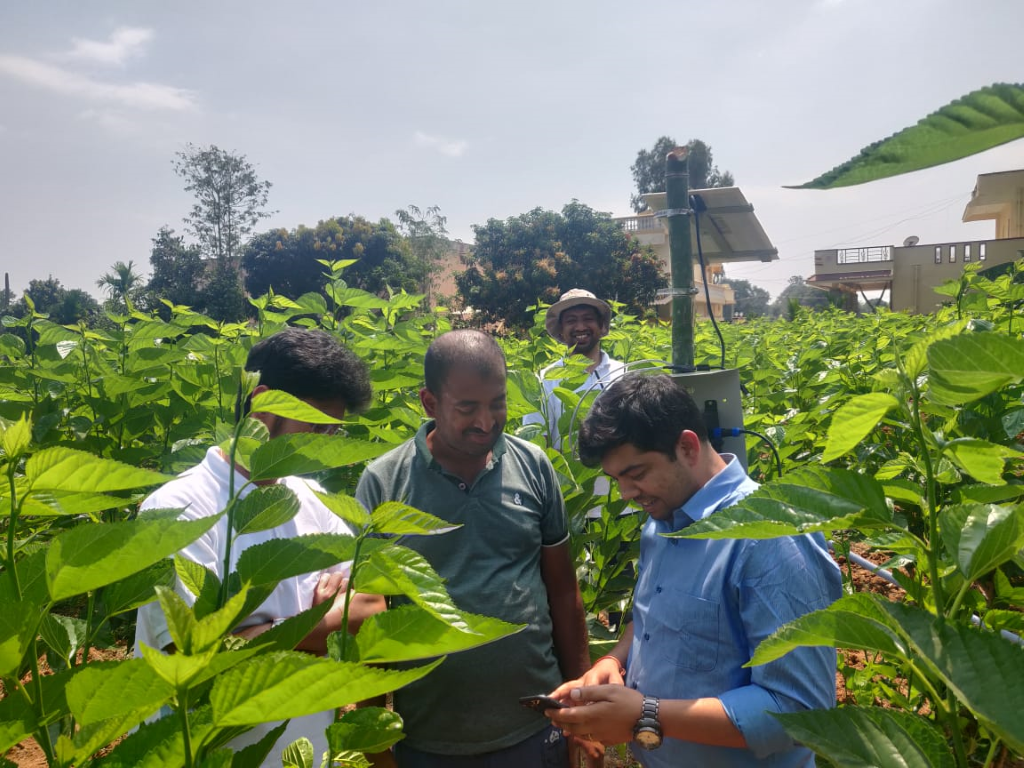
SS. What revolutionary changes has ReshaMandi brought to the silk industry?
MT: ReshaMandi is digitizing the way things are done in the silk industry. We are also assisting to create a wholesome environment for sericulture farmers, silk reelers, and weavers to thrive in this ancient art. With the help of mobile apps, IoT gadgets, and AI and tech-enabled devices, ReshaMandi is empowering the stakeholders to increase production, lower wastage, improve quality and, thereby, increase their income. The primary aim of ReshaMandi is to connect the huge network of farms directly to the reeler community via several techniques including fair pricing, scientific testing, optimized logistics, etc., thereby eliminating the chances of exploitation in the process.
Some technologies that are being currently employed by us on the ground are:
-
Scientific cocoon grading- AI-enabled quality testing of cocoon for reliable market pricing. This grading automates industry-known rendetta tests for quality assurance.
-
AI-led disease detection - To detect diseases in silkworms and save/prevent further damages by providing disinfection materials via the ReshaMandi app.
-
IoT-led advisory services - IoT-based rearing center monitoring for 10% higher productivity.
-
ReshaMandi Mobile App - A complete silk ecosystem starting from farm to consumer on one application.
-
Enabling Crop Risk Failure - By using AI-enabled crop tracking, and providing IoT-led advisories directly to app users, they remove the risk of crop failure by 80%.
For Silk Reelers: Scientifically graded cocoon procurement, fair pricing, AI-led yarn grading & linkages
For weaves: Cost-effective & quality assured yarn procurement with linkages to retailers
-
Yarn Quality Assurance- Weavers get scientifically graded yarn for better fabric output.
-
Better Control- ReshaMandi gives better pricing, quality & delivery control to weavers
SS: Tell us about your on-ground work with farmers?
MT: Right from the initial stage, our founding team, led by co-founder Utkarsh, an IIT Delhi graduate and serial entrepreneur, spent a great deal of time studying the problem statements in each vertical of the silk supply chain. He did door-to-door market research, spent a great deal of time with the farmers, reelers, and weavers, asking questions and understanding their problems. With the data he collected, we devised a two-pronged approach to solve the problems; one being the ReshaMandi app itself, where all our services are accessible to our customers at their fingertips. Secondly, we have tons of offline growth initiatives, which are essential to communicate with the farmers and are already disrupting the Silk market.
We have built a huge network of Farmer Centres in under 50km of the sericulture heavy districts, where farmers can get in touch with our representatives, either through a phone call or by physically visiting the center with prior appointment (due to Covid measures). The farmers have the option to pick up their inputs directly or order through the app with the representative’s help. They also have the flexibility to book an appointment with them to collect the cocoons from the farmer’s house to avoid long journey to the mandis.
Once we begin new in one cluster, we start with setting up the market linkage. Our representatives on-ground help us to penetrate into these clusters. Once we are a part of these clusters we begin imparting important advisories on the ideal practices to be followed day to day on their farms. These advisories are scientifically-backed due to our collaboration with scientists in this field advising on the ideal practices to be followed or to solve any technical query farmers may have.
We also encourage them to enroll in our IoT programs, which help them with personalized feeds related to mulberry cultivation for the silkworm to feed on and secondly, the rearing process of the silkworm itself. The quality of mulberry leaves and the quality of silkworm eggs is critical to the entire operation. The IoT devices deployed by us, apart from analyzing the rearing process, also recommend the best irrigation practices to increase the biomass of the mulberry leaves.
Timely access to quality eggs, powder disinfectant, and other materials on our app ensures that the farmers are not losing out on revenue. Maintaining the right environmental conditions and providing the right inputs itself has improved productivity by 20% and reduced crop failures to 10%. Farmers associated with us have reported a 30 - 35% increase in earnings within 3 months of our interventions.
SS: What's your vision for the company and how do you see the Indian silk industry in the coming years?
MT: Our goal since the inception of ReshaMandi was to make India ‘Atmanirbhar’ in silk production and eventually raise our country’s profile to be the largest quality silk-producing nation.
ReshaMandi’s central conviction is to introduce technology at every step of the silk supply chain in order to assist farmers, reelers, and weavers at every stage of the way, a task which has not been undertaken ever before. This brings with it its own set of first-mover advantages as well as challenges. But our founder team recognized the magnitude of the socio-economic impact ReshaMandi would have on the entire ecosystem and decided to plow through the hurdles. We aim to replicate our learnings and achievements in all corners of the country as well as internationally.
Krishi Jagran wishes ReshaMandi all the best for their endeavors.







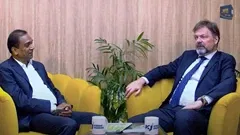
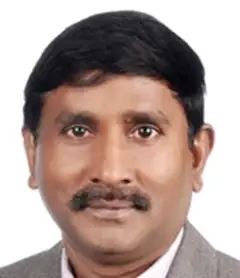
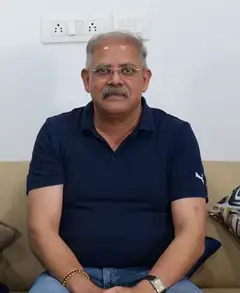
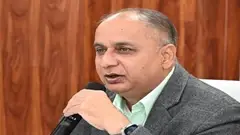





Share your comments